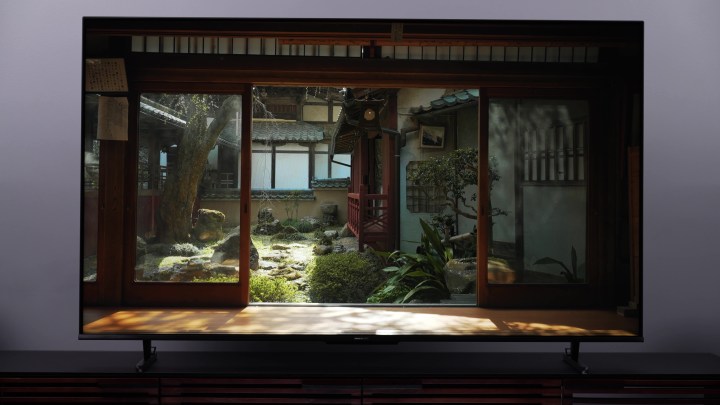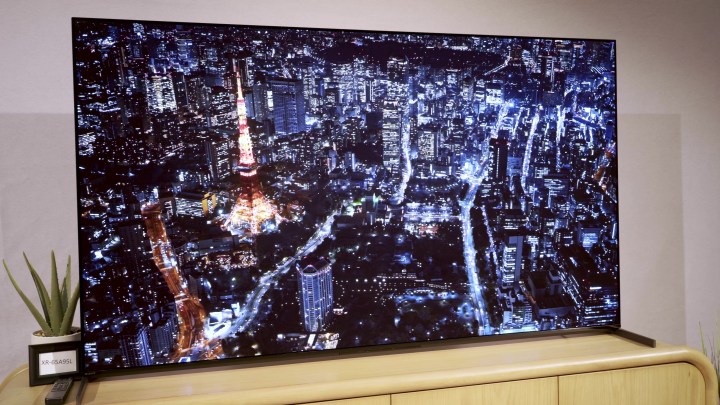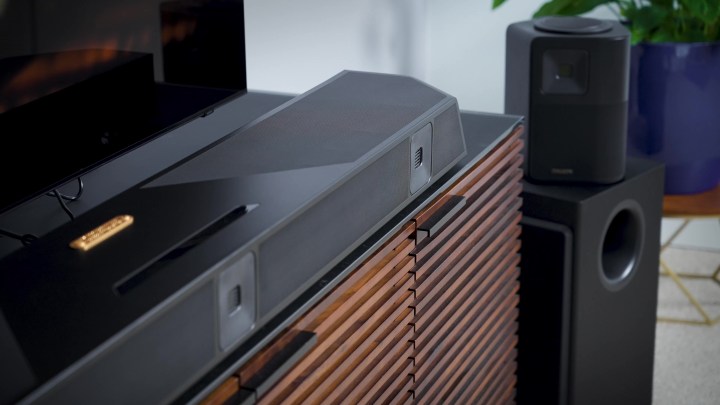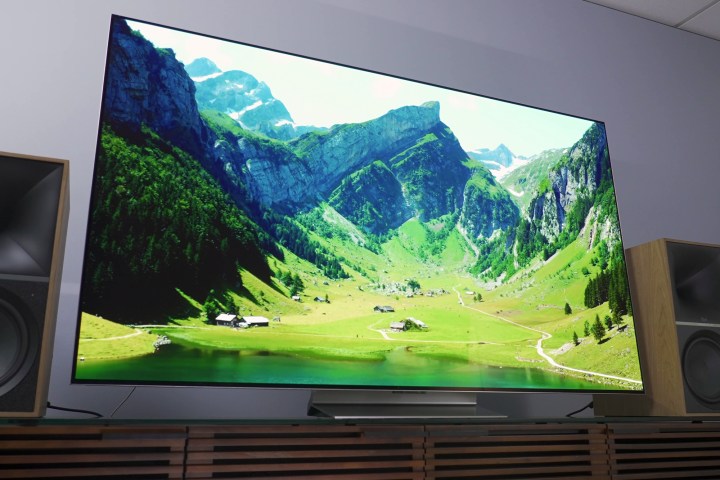You Asked is our series where our Tv expert Caleb Denison answers your frequently asked or insightful questions that we think can help a lot of our readership. In this installment, we explore if it matters what you use to stream Netflix (or any other streaming service) and whether we’re in a time when you should really just wait to buy a new TV. What about Hisense U8K versus TCL Q7? And will there be more Nakamichi Dragon comparisons?
Let’s get to it.
Quality streams

John Golla writes: Does it matter which piece of equipment one uses to watch a streaming service such as Netflix? I have a fiber optic TV service, a Panasonic 4K BluRay player, and LG C3 TV. All offer Netflix. The sound is fed to a Denon AVR. Would the picture and sound quality be the same regardless? Does it only depend on the internet speed?
Thanks, John. I’m glad you asked. The timing of your question could not be better. Our recent Sony X95L versus TCL QM8 comparison addresses this issue. In it, I show how the Max app on the Sony TV seems to be problematic, and the YouTube app on the TCL TV seems to be problematic, both in terms of picture quality.
But that’s really just the tip of the iceberg. Something I have been learning slowly over the last couple of years is that many, if not all, of the most popular streaming apps behave wildly differently from platform to platform. So, the Netflix app on LG’s webOS, for example, may behave dramatically differently from the Netflix App on Roku, which is different than Netflix on Google TVs or Chromecast with Google TV, and so on and so on.
I don’t even know about all the issues, but some include certain platforms limiting color bit depth to 4:2:0 – which means more color banding just because you are watching on that platform. It’s also true that some platforms refuse to allow buffering in favor of better picture quality, so even though you pay for 4K, you might not be getting it because the internet connection is too slow. Some platforms may present 24 frames-per-second (fps) content at 30 fps without you having any say in it.
The issue is wide-ranging, and there isn’t a single streaming platform or device that is perfect. They all have issues. And, no, I have not created a database to track or cross-reference all this, but that’s a good idea.
What I can tell you is that I have decided to settle on Apple TV 4K as my personal, preferred streaming OS and streaming device. It’s the one with the least amount of questions and just enough control. It also comes with the fewest number of headaches, and for that, I’m willing to pay extra. It’s not perfect, but it is the least flawed, and, sadly, I think that’s where we’re at with streaming right now. Pick the lesser evil. And for me, that is Apple TV 4K. I prefer using Google TV, but it seems like I can’t trust it.
TV recommendations

Next is a question from Tyler Creador, who wrote: I’m in the middle of the road of choosing either the Hisense 55-inch U8K or the TCL 55-inchQ7. I watch TV mostly at dinnertime and more on the weekends. We like to watch Netflix, YouTube, Disney+, Paramount Plus, and ESPN + for softball and cornhole. Our viewing angle isn’t straight on, but 6 to 10 feet away from the TV that is wall-mounted. I have a Samsung Model Code: UN55H6350 with a 2.1 soundbar and subwoofer combo from Samsung. The TV is in a room with a large window that only gets the sun when it’s setting in the sky. I am also looking into getting the Nintendo Switch OLED to hook up to as well. I use the Xfinity Flexbox and the Roku Ultra box for streaming.
Given this use, I’m inclined to say go for the Hisense U8K. In terms of picture quality and, to a lesser degree, sound, It’s the better-performing TV among the two you listed. And since you won’t be using the onboard Google TV interface for much other than selecting your desired input for your Roku or Xfinity Box, I’m comfortable with that suggestion. My main gripe is that Hisense’s OS slows down after a couple of years of updates. That may be changing, but I haven’t had a chance to test it. So until I do, that’s the one thing I keep in mind.

Along similar lines, Basim Obeida wrote: If budget is not a concern, which TV model is better to buy considering the use of it is streaming content (Netflix, Disney+, etc.) and casual console playing (PlayStation 5 to be exact)? Please note that the space allows for 65 or 75 inches maximum. The video quality is important, but I am not a “nit-nerd” and the room is semi-dark so brightness is not an issue. I just watched Episode 6 of You Asked, and following your advice, this is the most amount of information I was able to provide to help you help me.
You gave me just enough information to answer there. You are looking at a 65- or 75-inch TV, cost is no object, you stream Netflix and maybe play some PS5, and massive brightness is not an issue.
Given those considerations, especially the cost-no-object thing? I’m going to go out on a limb here and say that the Sony A95L is probably going to be the best TV to buy in terms of picture quality and overall performance. Now, please understand that I have not yet reviewed that TV. I will soon, Sony assures me of that. So, if you want to wait for that review just to be sure, that is certainly the safe, smart play. But, unless Sony really, really screws something up, which it does not have a history of doing, last year’s A95K is a good indication that the A95L is going to be an absolutely outstanding TV, and just slightly better in some small ways than the A95K. If you could still get an A95K, though? I would probably just get that and save some money. That is IF and only IF you don’t mind going 65-inch. If you want to stretch a bit and get a 77-inch, then you would need to wait for the A95L to come out.
I would also strongly consider the LG G3 OLED or the Samsung S95C QD-OLED, as both are very strong TVs as well, each with its own little advantages. But, yeah, if you’re going to pin me down to just one and tell me the cost is no object, I’d say get a 77-inch Sony A95L when it comes out. That has all the makings of the best TV of the year.
Nakamichi Dragon vs. Sony A9 showdown?

Mohammad Arafat says: Hello Caleb. Love from India. (Love right back at ya!) Can we have a Dragon versus Sonos 300 versus Sony A9- SW5 comparison?
I’m sorry to say that the answer to that is, for now, no. I really am sorry. I think that’s a great idea. And if I had the Sony HT-A9 here to do comparisons, I would have done that already. But Sony needed their HT-A9 back, so I returned it when I was done with the review. Perhaps I should have pressed harder to keep it. That’s my mistake. But, not only do I not have an HT-A9 from Sony, even if I did get them to send me one again, I also don’t have the Nakamichi Dragon anymore. I had to send that back to Nakamichi, which was kind of a bummer. But also, it was huge and heavy and I didn’t really have room for it to stick around so … it’s bittersweet. If I had to do a hot take on that, though? I’d say Nakamichi for the movies and Sony for the music, and the SW5 is OK, but it can’t hold a candle to the dual Nakamichi subs. That’s just based on memory.
Holy Grail TV FOMO

John Sprecher writes: It feels like there is so much innovation on the horizon. [That includes] brighter-than-G3 OLEDs, mini-LED/Quantum color [going] from good to great, and even larger big-screen formats next year. If you’re a multi-big-screen household, does it feel to you like a bad time to invest in a holy grail TV for the main viewing area of a home?
Well, John, I hope it helps you to know that you are not alone with these feelings out there. I get this question all the time because this concern always exists. But there’s your answer in a way: This concern will never go away. There will always be a worry with consumer tech that the next new version right around the corner is gonna be significantly better enough that waiting to buy is smart. Because the concern is that what you buy now would be obsolete, right?
Here’s the thing. I don’t think I can recall a year in which any new version of a TV made the one before it obsolete. Or even that much less desirable! The introduction of QD-OLED was one of the bigger moments in TV tech, and while it was new and impressive, it didn’t render OLED before it obsolete. Same with the LG G3 — MLA made things brighter, and that’s exciting, but how necessary is it for most folks? It isn’t. The G3 didn’t make anything obsolete either. Heck, some thought mini-LED was going to make regular LED obsolete and that clearly hasn’t happened either.
So, you’re not going to run into obsolescence. What’s really happening is you are worried you aren’t going to have the latest and greatest. And I get that. But that will always be true. There will always be little upgrades over the prior year. So, don’t try to wait things out for stabilizing – because they will always be in flux. Buy when you want to buy. Buy when you can buy. And do what you can to refuse your mind the urge to experience FOMO.




